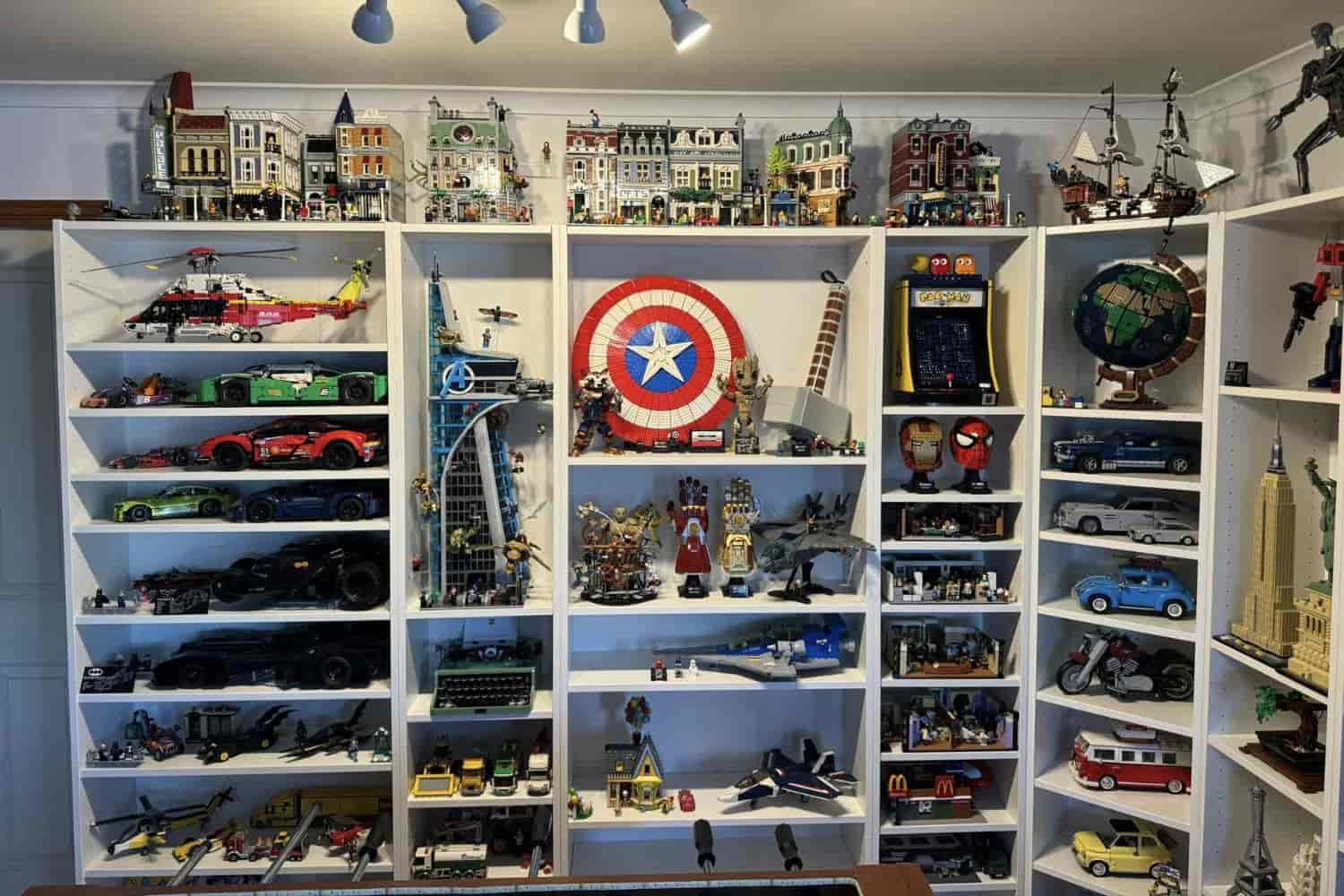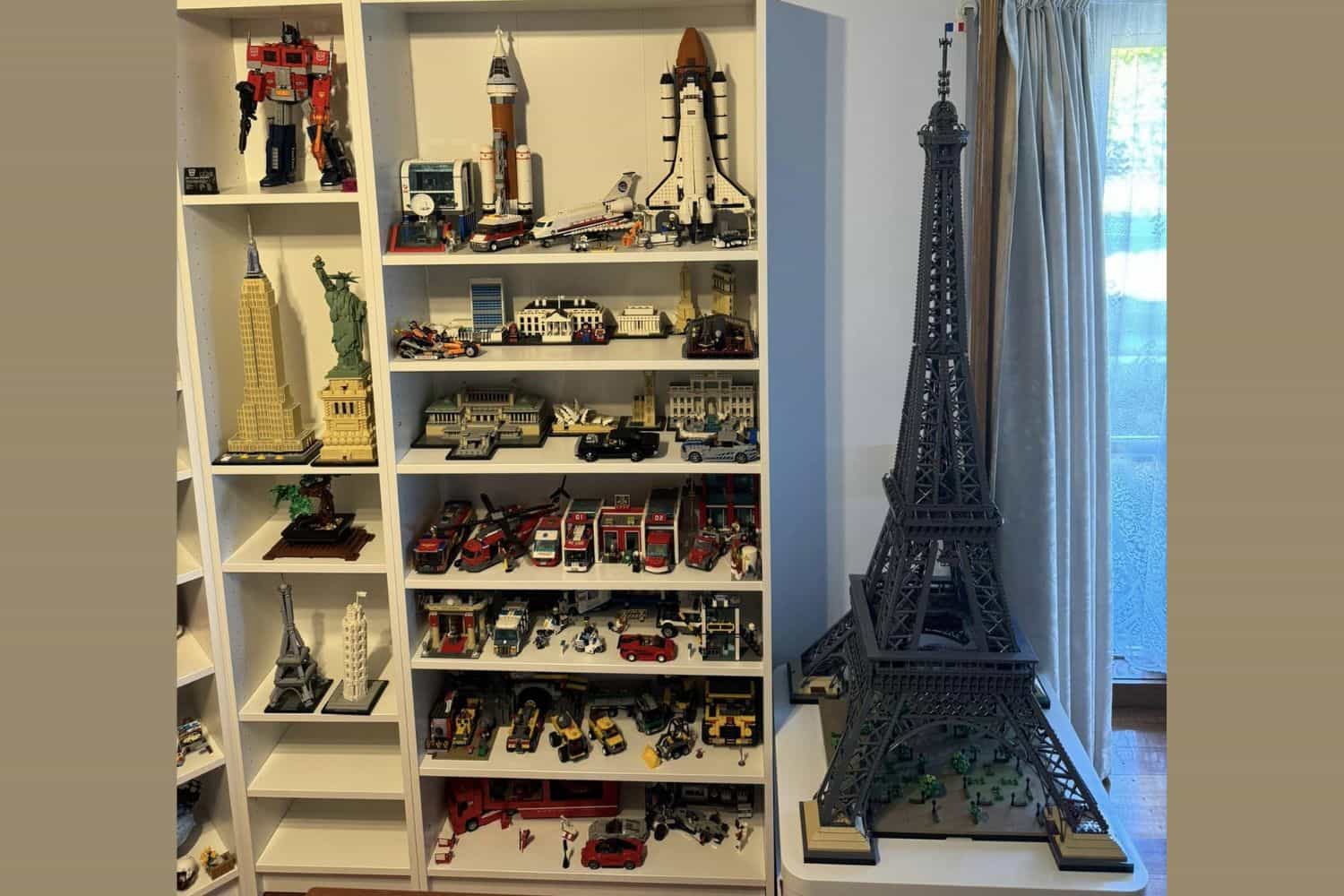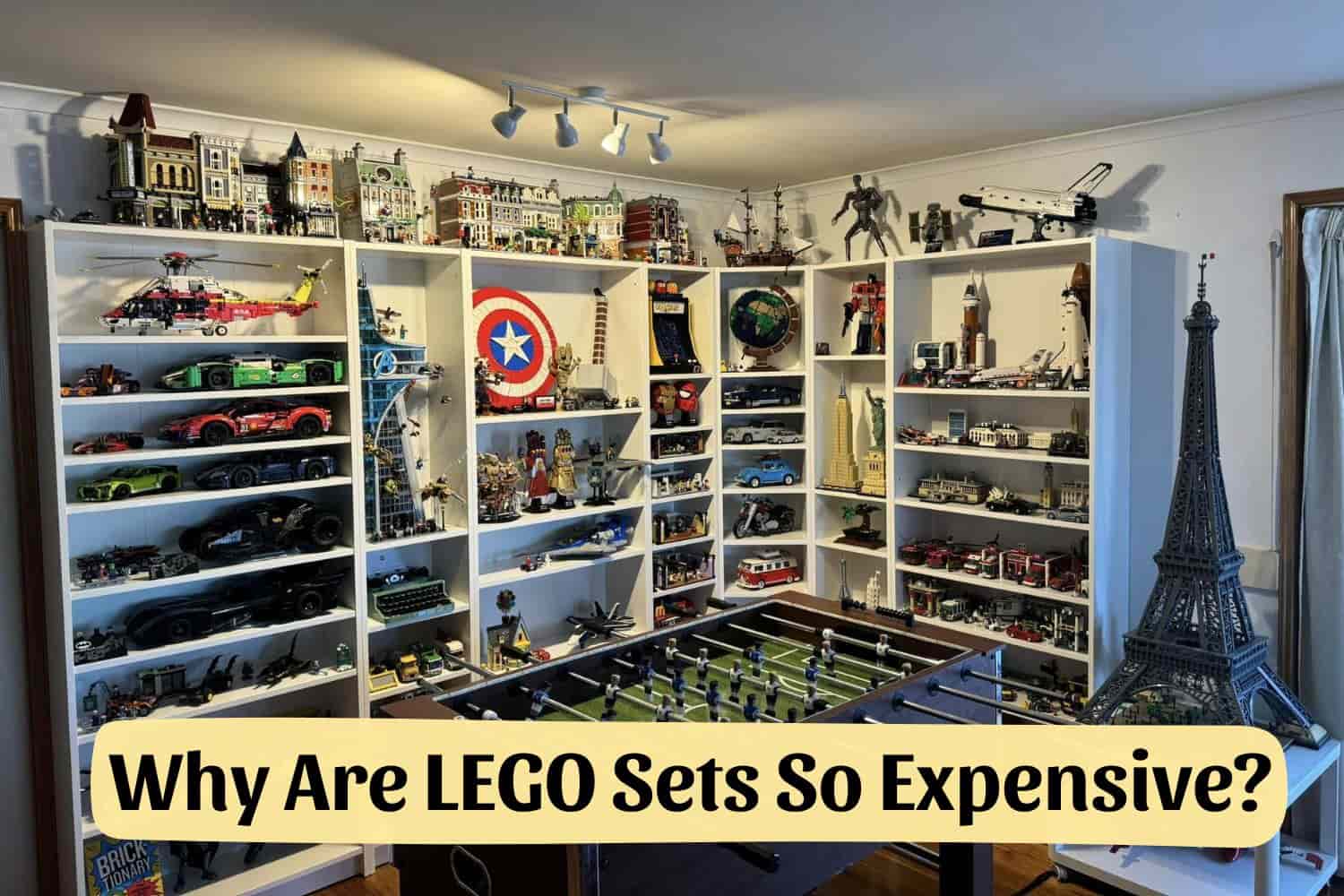Why Are LEGO Sets So Expensive? Delve into the reasons behind LEGO’s pricing, from quality and complexity to licensing costs. Get insights that explain the value in every brick!”
Why Are LEGO Sets So Expensive? – Unpacking the Price Tag
If you’ve ever walked through a toy store or visited the LEGO website, you may have noticed that LEGO sets can be quite expensive. While some basic sets can range from $10-$20, more complex and larger sets can cost hundreds if not thousands of dollars.
This begs the question – why are LEGO sets so expensive? In this article, we will explore the reasons behind the pricing of LEGO sets and uncover the value that lies within every brick.
Why Are LEGO Sets So Expensive?
LEGO: More Than Just a Toy Brand
LEGO stands out as one of the most beloved and iconic toy brands globally, known not just for its bricks but for its premium appeal. Much like how a Nike or LV logo adds value to clothing, the LEGO imprint elevates the price of a plastic brick.
Beyond traditional construction sets, LEGO has ventured successfully into video games, movies featuring original or adapted characters in LEGO form, and collaborations with fashion labels.
These endeavors underline the brand’s widespread attraction and versatility.
Receiving LEGOS isn’t merely acquiring a toy; it’s an educational, engaging adventure that captivates children and adults alike for hours on end.
LEGO holds the title of the world’s most powerful brand since 2015, surpassing even Ferrari according to BrandFinance, with a staggering $7.51 billion brand valuation.
The key to LEGO’s marketing triumph lies in creating memorable experiences and happy memories associated with their products. Every adult fan of LEGO (AFOL) likely has a heartfelt story about their initial encounter with the brand.
In its core mission of inspiring future generations of builders, LEGO continues to reign supreme as not just a toy company but an emblem of creativity and imagination.
Licensing Fees

One of the main reasons for the high price tag on LEGO sets is due to licensing costs. LEGO has partnerships with major brands such as Disney, Marvel, and Star Wars, allowing them to create themed sets based on popular movies and TV shows.
These partnerships come at a premium cost, which ultimately gets passed down to the consumer.
Licensing fees for LEGO sets typically consist of a flat fee and royalties on sales. In 2020, LEGO allocated approximately $500 million towards license and royalty expenses.
Quality and Durability
Another factor contributing to the cost of LEGO sets is the high-quality materials used in their production.
LEGO bricks are made from specialized ABS plastic, which is known for its durability and ability to hold up against wear and tear.
LEGO uses various materials like high-impact polystyrene, polypropylene, and thermoplastic polyester for their bricks. They employ 12 different types of plastic in their products.
LEGO brick manufacturing machines work with precision down to 10 micrometers, ensuring a secure connection between pieces. The tight tolerances set LEGO apart from other brands, guaranteeing a superior fit.
LEGO molds are built to last through numerous assemblies without losing functionality. Their durability is evident when stepping on a brick barefoot. Cleaning them is a breeze too.
An experiment at the Open University found that a single 2×2 LEGO brick can withstand an impressive amount of pressure before breaking. Dr. Ian Johnston discovered that it could endure up to 4,240 Newtons – equivalent to supporting a tower of LEGO bricks over 2 miles high.
Additionally, LEGO has strict quality control measures in place, ensuring that every brick meets their high standards. This level of quality and durability comes at a price and is reflected in the cost of LEGO sets.
Research and Development Costs
LEGO invests heavily in research and development to produce innovative new sets and improve existing products.
Research and development are vital investments for LEGO, a company constantly innovating with over 850 new sets annually. Their Annual Report 2020 revealed that 55% of their yearly portfolio consists of new products, each requiring thorough research and testing.
In 2020, LEGO spent around $1.8 billion on research and development, which includes creating new product designs, testing materials, and improving production processes.
This investment allows LEGO to constantly evolve and create sets that are more intricate, challenging, and appealing to consumers.
Furthermore, the cost of developing new molds for specialized pieces and minifigures also contributes to the overall price of LEGO sets.
LEGO not only focuses on new sets but also on improving the bricks themselves. With an environmental commitment, LEGO has introduced sustainable materials like sugar cane and recycled plastic bottles for its bricks. By 2025, they aim to eliminate single-use plastic packaging.
Moreover, LEGO plans to invest over $400 million in three years in initiatives like “Learning Through Play,” carbon emission reduction, and transitioning from plastic to paper packaging.
Attention To Detail and Design

LEGO sets the standard for precision engineering and attention to detail. Each brick is meticulously crafted with an accuracy of 0.004 mm, ensuring quality ten times finer than human hair.
The unique numbering system allows swift identification and correction of any flawed molds, maintaining exceptional standards where only about 18 bricks per million fall short.
The interoperability of LEGO bricks across different sets is a testament to their consistency over time. Whether from 1958 or today, each piece fits seamlessly, enabling easy replacement if lost or broken without the need to buy an entire set again.
While competitors strive to match this level of manufacturing excellence, the long-lasting nature of LEGO products justifies their premium pricing.
Parents can pass down these durable toys through generations, guaranteeing continued playtime enjoyment for years to come.
Size and Complexity

The size and complexity of LEGO sets have evolved over the years, impacting their cost and price. In the 1980s, a LEGO brick was around 40 cents each; today, it averages 10-12 cents per piece.
Sets back then contained between 500 and 800 pieces, whereas modern sets are massive.
LEGO takes pride in its intricate designs, from creating accurate replicas of famous landmarks to detailed depictions of movie scenes.
In 2013, a team of designers spent over 2,700 hours designing and perfecting the largest LEGO set ever – the Millennium Falcon. The final product consisted of over 5,000 pieces and a price tag of $800.
Additionally, the level of detail in LEGO sets extends beyond aesthetics. To ensure that their sets are both entertaining and educational, LEGO works with child development experts to incorporate learning elements into their products.
This meticulous attention to detail adds value to the overall experience and justifies the cost of LEGO sets.
With some sets now containing thousands of precisely engineered elements for cross-theme compatibility, their prices naturally increase.
Although investing in these larger sets may seem expensive initially, remember that LEGO meticulously designs each set’s difficulty level to provide endless fun while enhancing spatial awareness and problem-solving skills.
Are LEGO Sets Worth the Price?
While the cost of LEGO sets may be higher than other building toys in the market, the quality, durability, attention to detail, and size and complexity make them worth it. Whether for young children or adults seeking an enjoyable pastime, LEGO sets provide endless hours of entertainment while promoting critical thinking skills.
Furthermore, investing in LEGO sets can also hold value as a collector’s item, with many sets appreciating over time.
So while the initial price may be steep, the long-term benefits and enjoyment of LEGO sets make them a worthwhile investment for individuals and families alike. And with their commitment to sustainability and continuous improvement, LEGO will continue to deliver high-quality products that justify their premium pricing.
Benefits of Intellectual Development
Playing with LEGO sets provides more than just entertainment – it also offers numerous intellectual development benefits.
LEGO sets encourage creativity and imagination by allowing children to build and construct anything they can imagine.
This open-ended playstyle fosters problem-solving skills, as children must figure out how to build structures or vehicles using the limited pieces available.
Additionally, playing with LEGO sets helps improve fine motor skills, hand-eye coordination, and spatial awareness. The act of manipulating small LEGO pieces and connecting them requires precise movements and control.
Furthermore, as children build more complex sets, they learn to follow instructions, develop patience, and enhance their focus and attention span.
In recent years, LEGO has also incorporated STEM elements into its sets, teaching basic engineering principles through interactive building experiences.
LEGO sets offer cognitive benefits and foster imaginative play by building immersive worlds with stories and characters. Role-playing with LEGO Minifigs enhances storytelling skills and encourages social interaction among siblings or friends.
Overall, LEGO sets provide an engaging and educational experience that can benefit children’s intellectual development.
So while they may come at a higher price, the long-term value of LEGO sets for a child’s growth and learning makes them worth every penny.
Resale Value
As mentioned earlier, LEGO sets can appreciate over time, making them not only a fun and educational investment but also a financial one.
Limited edition or retired sets often increase in value due to their rarity and high demand from collectors.
For example, the largest LEGO set ever – the Millennium Falcon – now sells for over $6,000 on popular resale sites like eBay.
Investing in LEGO sets can be a smart move for those looking to diversify their investment portfolio, as they provide both entertainment and potential financial gain.
Selling off a well-maintained collection of LEGO sets in the future could potentially bring in considerable profit, making them worth every penny spent on initial purchase prices.
Furthermore, with more people becoming interested in collecting LEGO sets as a hobby, the resale market for them continues to grow.
So not only can LEGO sets offer endless hours of enjoyment and educational benefits, but they can also hold value as a valuable asset in the long run.
Conclusion
LEGO’s commitment to quality, innovation, and creativity ultimately drives the cost of its sets.
By constantly investing in research and development, partnering with major brands, and paying attention to even the smallest details, LEGO continues to soar as a beloved brand for generations to come.
So whether it’s building an epic castle or reenacting scenes from your favorite movie, LEGO is more than just a toy – it’s an investment in imagination and creativity. So grab your bricks and get ready to build amazing memories!
Let your imagination take flight with LEGO. Your possibilities are endless. Keep playing, keep building, and keep inspiring the next generation of builders. Happy building!
Thanks for reading our article Why Are LEGO Sets So Expensive? If you want to know more information, visit our website here.
Read more:

